Antique Estate Sterling Silver Baltic Amber Ring Etruscan Poison Pill Opens
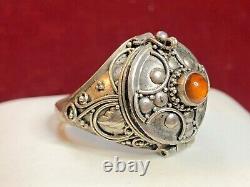
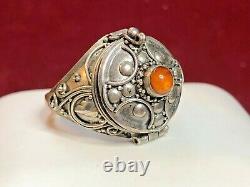

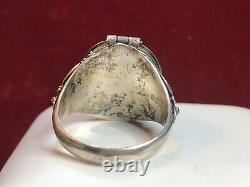
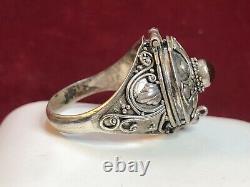
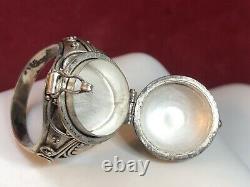
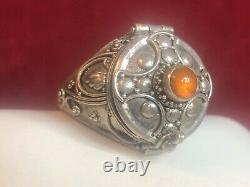
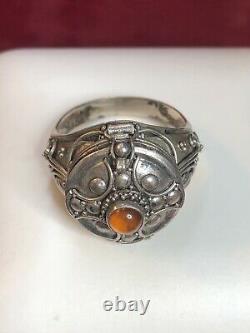
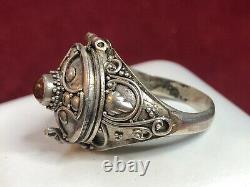
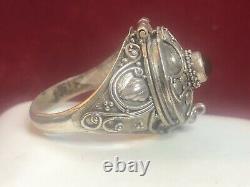
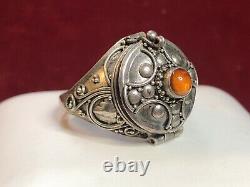
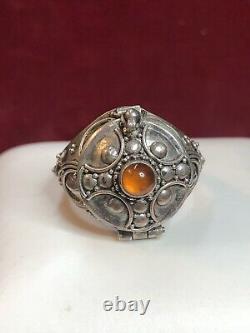

ANTIQUE ESTATE STERLING SILVER BALTIC AMBER RING ETRUSCAN POISON PILL OPENS. PERFECT SIZE 11 1/2 8.18 GRAMS AMBER IS 1/2 CARAT ROUND BEZEL SET. Originating in ancient India and the Far East, the poison ring eventually made its way to Europe.
The traditional poison ring had a very small container hidden under a hinged cover. Ancient Romans sometimes used poison rings to commit suicide when a painful death was unavoidable. There are lots of names for poison rings secret, pillbox, compartment, locket or vessel rings but historically they all serve the same sinister purpose: to slip poison into an enemys food or drink, or to help the wearer commit suicide to avoid capture or torture. Fortunately, today they are delightful items of jewelry. Their secret compartment can be used for something magical, like holding an image of someone we love for hope and healing.
In the Middle Ages, these rings were used to hide relics of saints, such as tiny bits of their hair, bone and teeth, to protect the wearer from misfortune. During the Renaissance, aristocrats used them to hold mementos including locks of hair and portraits of loved ones, or filled them with perfume to override the rank odors of the street. Designed with a small container hidden under a hinged cover, poison rings are thought to have originated in ancient India and the Far East, replacing the practice of wearing keepsakes in pouches around the neck. After their popularity spread to other parts of Asia, the Middle East and the Mediterranean because they were so practical, they arrived in Western European during the Middle Ages. Both fact and fiction surround the use of poison rings.
Hannibal is said to have worn one and may have used it in 183 B. In the early 1600s, Lucrezia Borgia, an Italian noblewoman who was the daughter of Pope Alexander VI, may have used one to dispose of her political rivals. When Elizabeth I of England died in 1603, a locket ring with a secret compartment containing portraits of her mother, Anne Boylen and herself, was taken from her finger. The rings are designed with all kinds of different ornamentation. The larger the stone, the more could be concealed in the compartment below, so the dispersal of poison could go undetected. But the role of fact or fiction aside, the poison ring has such a bewitching history that today it offers a sense of mystery and has a hold on our imagination.It can be interpreted as a symbol of hope and healing, turning it from object death into a source of pleasure and joy. The item "ANTIQUE ESTATE STERLING SILVER BALTIC AMBER RING ETRUSCAN POISON PILL OPENS" is in sale since Thursday, March 11, 2021. This item is in the category "Jewelry & Watches\Fine Jewelry\Fine Rings\Gemstone". The seller is "4744366" and is located in Andover, Massachusetts. This item can be shipped worldwide.
- Modified Item: No
- Total Carat Weight: 1/2 CARAT
- Style: Etruscan POISON PILL
- Main Stone Color: AMBER
- Main Stone Treatment: Not Enhanced
- Metal Purity: 925 parts per 1000
- Main Stone: Amber
- Main Stone Creation: Natural
- Metal: Sterling Silver
- Brand: Antique
- Ring Size: 11 1/2
- Main Stone Shape: Round

